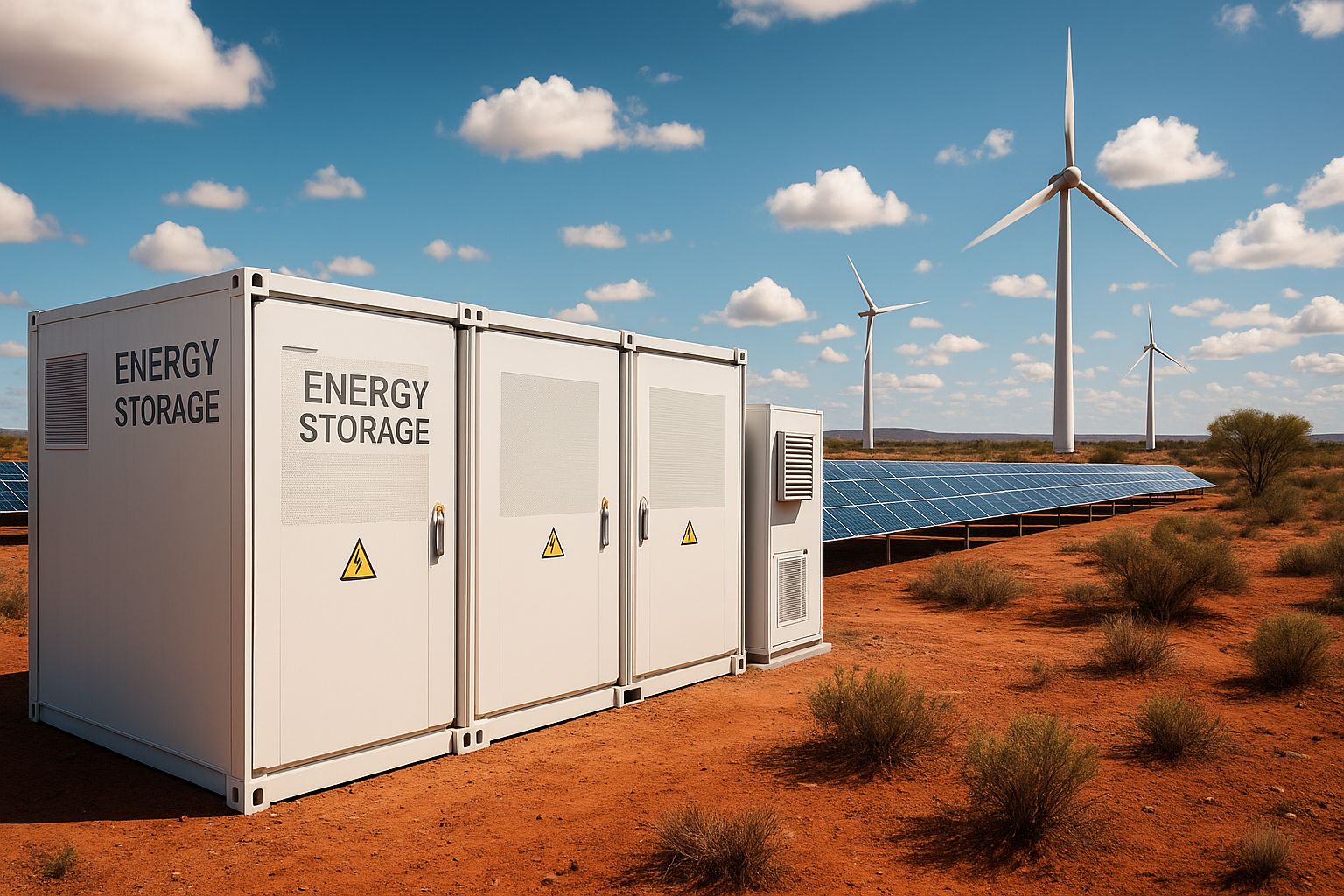- Green Glow
- Posts
- 🌱 Why Safety and Sustainability Will Define the Future of Australia’s Energy Storage 🔋💚
🌱 Why Safety and Sustainability Will Define the Future of Australia’s Energy Storage 🔋💚
Australia’s clean energy transition now depends on battery storage that is both safe and sustainable. Discover why thermal stability, recycling, low-impact manufacturing, and long-term performance are becoming the core requirements shaping the future of Australia’s energy storage sector.
Australia is entering a new chapter of its clean energy transformation. Large scale batteries, community level energy storage systems, and household battery units are becoming essential components of the national transition away from fossil fuels. As investment, deployment, and innovation accelerate, two priorities are rising to the top of every conversation in the sector. Safety and sustainability. Together, they will determine how fast and how responsibly Australia can build the future of energy storage.
Table of Contents

The Rise of Energy Storage Across Australia
The rapid growth of renewables has created a pressing need for flexible storage. Solar and wind generation are expanding across the grid, yet periods of oversupply and shortfalls remain common. Energy storage has become the missing link for reliability, affordability, and climate resilience.
From virtual power plants on rooftops to gigawatt scale storage farms connected to transmission lines, batteries are now at the center of national energy planning. Their expansion has been backed by strong consumer adoption, government support, and growing investment from local and global manufacturers. To maintain this momentum, the industry must focus not only on capacity, lifespan, and price, but also on safety and sustainability across the entire ecosystem.
Why Safety Is the First Priority
Australia’s climate presents one of the toughest environments on earth for energy storage systems. Extreme heat, bushfire conditions, coastal humidity, and intense storms increase risks for both small and large scale battery installations. Batteries must operate reliably in scenarios the energy sector could not have imagined only a decade ago.
Safety in this context is not a single feature. It is a system approach that includes thermal stability, intelligent control, quality materials, tested fire management, and certified electrical design. Batteries must be able to withstand high temperatures, prevent thermal runaway, and respond automatically to faults. The public will only support the widespread rollout of storage if systems are built to protect homes, communities, and critical infrastructure.
As more homes, businesses, and utilities adopt battery storage, trust becomes a key driver of progress. The future of deployment will favor companies that can prove their safety performance with transparency and verified standards.
Sustainability as the Second Pillar of Long Term Growth
Renewable energy exists to reduce the impact of climate change. To achieve that mission, energy storage must adopt the same environmental responsibility. Without sustainable planning, large scale battery adoption could generate significant waste and resource strain in the coming decades.
Sustainability in the storage sector ranges from responsible mineral sourcing to recycling pathways at end of life. It also includes high efficiency power electronics that reduce losses during charging and discharging, responsible manufacturing powered by clean energy, and packaging designed to avoid unnecessary emissions. Energy storage that is built for long term performance rather than short term cost will minimize environmental impact and extend value over decades.
A lifecycle approach is quickly becoming a strategic advantage rather than an optional feature. Governments, customers, and investors now reward companies that prioritize sustainability across production, operation, and end of use recovery.

How Both Pillars Work Together
Safety and sustainability are often discussed separately, yet they function as a single foundation for the future of energy storage. Batteries that are durable, low waste, highly recyclable, and designed for thermal stability offer both environmental and operational reliability. The same materials and engineering choices that improve safety also extend battery lifespan and reduce resource needs.
A strong storage sector will not grow from capacity alone. It will grow from responsible design that protects people, the environment, and the grid. In this way, safety and sustainability reinforce each other as the defining characteristics of next generation energy storage.
The Benefits for Australia’s Energy Transition
Prioritizing safety and sustainability strengthens Australia’s transition to clean energy in several ways:
Greater consumer and investor confidence
Reduced risk of storage interruptions from extreme weather
Lower environmental impact from battery deployment
Longer asset lifespan and improved return on investment
Support for a circular economy and recycling market
Faster regulatory approval and fewer operational barriers
With the right foundation, energy storage can support a stable grid, expand renewable generation, and contribute to climate goals without unintended consequences.

Conclusion
Australia’s future energy system depends on storage that is safe, reliable, and environmentally responsible. The companies that lead the next decade will be those that treat safety and sustainability not as extras, but as core design principles. Manufacturers, policymakers, and energy providers are already shifting toward this framework, and the momentum will continue to build as renewables expand.
Energy storage is not just about holding power. It is about holding trust. It is about protecting people and the planet while building an energy system built to last. For Australia, safety and sustainability are not just trends. They are the pillars of the future.
FAQs
Why is safety such a major focus for Australia’s energy storage sector?
Australia experiences extreme heat, bushfires, intense storms, and variable climate conditions. These factors increase risk for battery systems if they are not designed for thermal stability and fault management. Safety is essential to protect homes, communities, and critical energy infrastructure.
What makes sustainability important in battery storage?
With large scale adoption of storage, Australia could face significant battery waste in the future. Sustainable storage reduces environmental impact through responsible material sourcing, efficient manufacturing, longer battery life, and strong end-of-life recycling pathways.
Does improving safety increase the cost of batteries?
Higher safety standards may add initial cost, but they reduce long term maintenance, replacement, and operational risk. In most cases, safe batteries provide better economic value across their full lifecycle.
What battery types are considered safer for harsh climates like Australia?
Lithium Iron Phosphate (LFP) batteries are widely regarded as safer due to their higher thermal stability and lower risk of thermal runaway. They are increasingly used across household, commercial, and grid-scale storage.
Can energy storage be both safe and environmentally sustainable at the same time?
Yes. The same design elements that improve safety, such as better materials, efficient thermal management, and smart battery controls, often reduce stress on the battery and extend its life. Longer lifecycle performance supports sustainability by reducing resource needs and waste.
You May Also Like
External Links
Follow Us:
X: https://www.x.com/greenglownews
Youtube: https://www.youtube.com/@greenglownews
Instagram: https://www.instagram.com/greenglownews
Sponsored Links